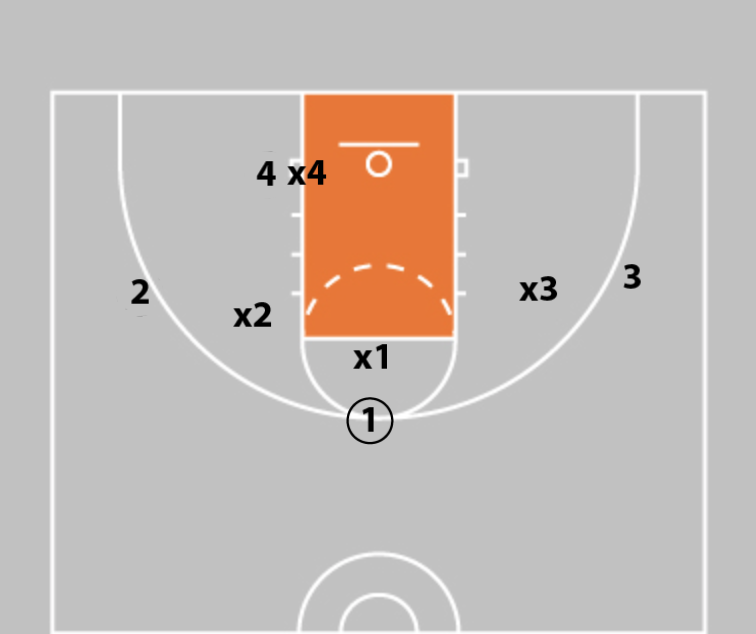The Best Drill To Build Winning Offensive Habits
How many times have I told them not to do that?
Have you ever found yourself saying that about your team? I know I have. It's so frustrating when you cover things over and over and yet players either don't listen or don't adjust their habits.
This can leave you really frustrated as a coach.
If you find yourself in this situation, you have a couple options:
- Give up on the changes you are trying to make
- Continue to bang your head against the wall and think things will change (remember Einstein's definition of insanity)
- Try something different
It seems pretty clear that the last answer is the best one. But what should you do?
FREE BONUS PDF
7 Drills For Championship Practices
How You Can Talk Less But Get More From Your Team
Repeating yourself over and over hasn't worked. So continuing with verbal pleas is not a winning strategy.
What is . . . putting the onus on them. How do you do this?
- Set your expectations for performance
- Play
- Have a consequence for those who don't follow the expectations
Coach Ryan Schultz does exactly this in How To Run Championship Practices.
Offensive Cutthroat - The Drill That Forces Players To 'Put Up Or Shut Up'
Setup
- Can be played 3 on 3, 4 on 4, or 5 on 5.
- Three or more teams rotate through.
Instructions

- Coaches create rules that must be followed, otherwise coaches rotate that team out. Examples are:
- No wasted dribbles- square up to the hoop first.
- Purposeful hard cuts and drives.
- Play off 2 feet in the lane.
- Don't let the ball die in your hands.
- Thank the passer on a made basket.
- Must have a post touch.
- If the offense makes it, they stay.
- If the defense stops them, they go to offense and the next team comes on to play defense.
Coaching Tips:
- Tailor the offensive rules to your team's system. For example, if you pass & cut, make a failure to cut a turnover. Don't include rules that don't fit your style of play.
- Limit the number of rules you include (3-4 is usually a good number).
- Include a couple cultural 'musts' as well. These could be things like pointing to the passer or sprinting to help up a fallen teammate.
- Keep the drill moving fast. The 3rd team knows they are coming in on defense, they just don't know who they'll be guarding. Not breaking in between possessions forces the defense to come on with a sense or urgency and communicate.
- Try the same drill with defensive rules.
A Drill For All Teams & Ages
It doesn't matter what age or level you are coaching. Cutthroat is a great drill for all teams.
Some drills only fit certain systems and strategies. The beauty of cutthroat is you can modify it to your team's needs.
In this video, you see Coach Jim Huber conducting a 4v4 No Dribble Drill as part of Jim Huber Beginner Basketball Ages 5-9.
This drill is being taught to elementary school age players. For that age, you may not require a post touch. However, there are still appropriate rules you could put in place:
- Players must catch & square
- Players must cut after every pass
- Players must catch the ball at the rim or behind the 3-point line (to work on spacing)
When players fail to do those things, they lose possession.
Ben Franklin's Coaching Advice
Ben Franklin famously said, "Tell me and I forget. Teach me and I may remember. Involve me and I learn."
This maxim applies just about everywhere. Good coaches apply it on the court.
All players enjoy playing offense. Losing the chance to do so is a motivator. Use it to your advantage with Cutthroat and watch your players improve as they develop habits that lead to success!
Looking For More Drills That Build Winning Teams?
- How To Run Championship Practices With Ryan Schultz & How To Run Championship Practices With Nate Steege - Coach Schultz and Coach Steege share over 20 drills each that they've used to build state championship programs. The drills work at every level. In addition to the drills themselves, you'll see candid footage of how an outstanding coach runs a high level practice. These 2 products are sure to make your practices more efficient & effective.
- Jim Huber Beginner Basketball Ages 5-9 - A comprehensive coaching system to properly develop those new to the game. This product features age appropriate teaching of the most important basketball skills. Players learn these skills in a fun and engaging way. In addition to individual skills, players begin to learn team offense and defense concepts.
FREE BONUS PDF
7 Drills For Championship Practices
What do you think? Let us know by leaving your comments, suggestions, and questions...
|
|||


 Facebook (145k Followers)
Facebook (145k Followers) YouTube (152k Subscribers)
YouTube (152k Subscribers) Twitter (33k Followers)
Twitter (33k Followers) Q&A Forum
Q&A Forum Podcasts
Podcasts